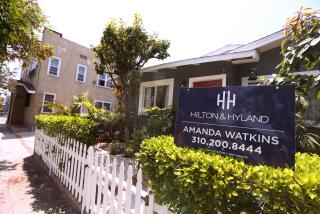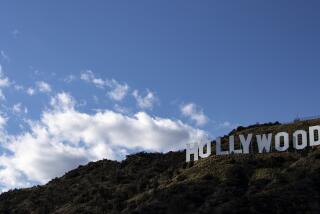L.A. Office Markets Doing Well Relatively
Los Angeles-area office landlords are weathering the latest recession better than the last one, even though markets across the county have weakened this year as demand for office space has slumped along with the economy.
Rental rates remain higher in most office districts than they were in the early 1990s, the percentage of empty space is lower, and much less new space is under construction, according to a survey by Julien J. Studley Inc.
Companies looking for offices should be able to negotiate favorable leases during the next year or so, but tenants wonât find the rock-bottom prices of the last recession, the study suggests. Another implication is that owners of office properties wonât face foreclosure in anywhere near the numbers of the previous downturn, when many buildings generated too little rent to cover the mortgage.
The study provides statistical confirmation of what many have long believed: Landlords are suffering less than they did in the recession of the early 1990s.
âNow that weâre officially in a recession, more people are asking how this office market compares to the previous one,â said Howard Sadowsky, vice chairman of Julien J. Studley Inc.
Although the last U.S. recession officially lasted only eight months from mid-1990 to early 1991, it dragged on longer in Southern California and hit commercial real estate especially hard. Office markets didnât improve much until 1995 or 1996.
Many tenants negotiated discounted rents for offices in formerly expensive business neighborhoods during the last slowdown, often moving from less popular places to more prestigious addresses.
âLandlords are dropping rates some, but not as steeply as they did then,â Sadowsky said. Rents throughout the Southland, he said, are down about 6% to 8% in the last year but remain higher than in 1992.
An exception is downtown Los Angeles, where the average asking rent for office space is nearly 12% lower today than it was in 1992--$22.56 per square foot per year versus $25.53. But the percentage of empty office space is 18.3% downtown today, compared with 26.5% then, a marked improvement for landlords.
Vacancy rates have crept up into double digits throughout Los Angeles County after dipping into single digits in many places in the late 1990s. Yet todayâs vacancy rates are still lower than those of 1992, said Hunt Barnett, a senior managing director at Insignia/ESG.
Conditions today are very different from those of the early 1990s, Barnett said.
âIn that early â90s period, we had a riot, fires in Malibu and Laguna Niguel, the impact of Asian economic problems, the collapse of the defense industry, an earthquake, the savings-and-loan debacle and the overbuilding of space,â Barnett said. âWhat we have now is a lack of demand as a result of the financial recession, compounded by the war in Afghanistan.â
Rents fell and vacancies rose virtually without exception in all of the office neighborhoods during the last recession, said Bill Boyd, a senior vice president with Grubb & Ellis, but conditions vary from place to place today.
Rental rates have continued to rise in Glendale, Pasadena and Burbank, Boyd said. Although the volume of space being leased is slowing, he said, landlords are in better shape than they were 10 years ago because little new space is being built to compete with existing buildings.
Some landlords are in better financial position today because they bought buildings at bargain prices during the last downturn and hence can more easily meet mortgage payments, said Dick Schnell, a senior vice president at Colliers Seeley International. Another difference today, Schnell said, is that Los Angeles is not beset by mergers and consolidations like those of a decade ago that dumped so much empty space onto office markets.
âWe are nowhere near in as bad a position in 2002 as we were in 1992,â Schnell said.
Conditions today must be viewed in relative terms to put them in perspective, Barnett said.
Even todayâs double-digit vacancy rates are relatively low by historical standards, Barnett said. The rates only look high in comparison with the 4% and 5% vacancy rates of last year, rates that he termed âan anomaly.â
Despite the overall slowing of the L.A. office world, deals are still being done.
âThe markets are not at a standstill,â Sadowsky said, but most of the action today consists of lease renewals, in contrast to the space grabbed by newly formed companies when the economy was growing in the late 1990s.
Many tenants today are uncertain whether their businesses will grow or shrink in the next year or two, Sadowsky said, so some are asking landlords for one-year lease extensions rather than renewing for a typical five-or 10-year lease.
One-year extensions are rare because landlords and tenants donât usually care for them, but in todayâs uncertain climate such deals allow tenants to postpone leasing decisions until they have a better idea of how much space theyâll need.
Some landlords are going along with the idea, Sadowsky said, because they think rents are going to be higher a year from now.
(BEGIN TEXT OF INFOBOX / INFOGRAPHIC)
Recession Then and Now
(text of infobox not included)
More to Read
Inside the business of entertainment
The Wide Shot brings you news, analysis and insights on everything from streaming wars to production â and what it all means for the future.
You may occasionally receive promotional content from the Los Angeles Times.










